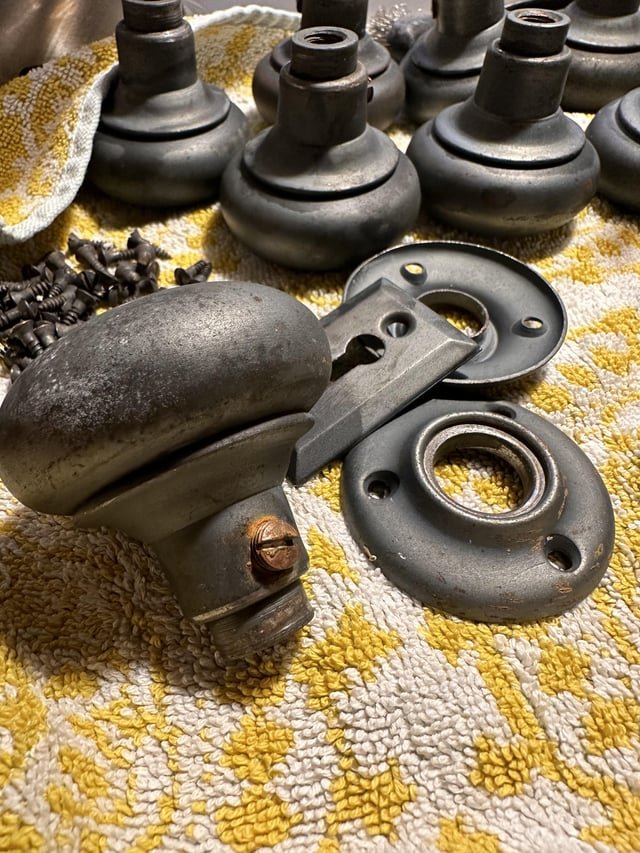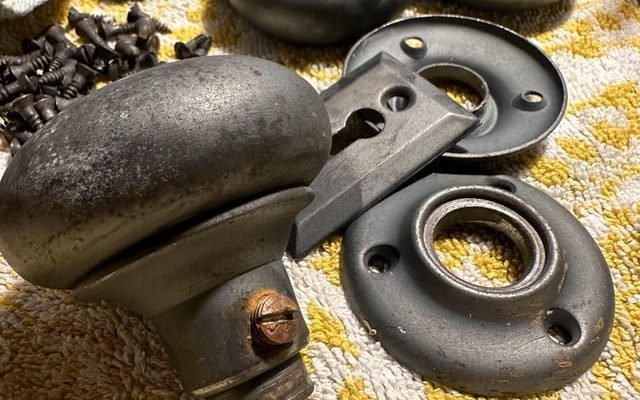
So, how do you keep your interior door hardware shiny and functional? It’s a lot more straightforward than you might think. With a little care and the right techniques, you can protect these essential pieces of your home. Here’s a deep dive into how to prevent corrosion and keep your door hardware in top shape.
Understanding Corrosion and Its Causes
Corrosion is a natural process where metals slowly break down due to environmental factors. Think of it like rust creeping into your favorite bike. When moisture, oxygen, and sometimes even pollutants interact with the metal, they create a chemical reaction that tarnishes the surface over time. This is especially true for door hardware, which often sees a lot of use and is exposed to various elements.
There are several factors that contribute to corrosion. Humidity is one of the biggest culprits, especially in places like bathrooms or kitchens where moisture levels can spike. Regular use can also wear down protective coatings, making your hardware vulnerable. Additionally, certain materials—like untreated steel—are more susceptible to corrosion than others. Understanding these causes helps you take preventive measures before the problem starts.
Also, consider the location of your interior doors. If you live in a area with high humidity or drastic temperature changes, you might need to be extra vigilant. The more you know about what causes corrosion, the better prepared you’ll be to keep your door hardware looking and working its best.
Choose the Right Materials
Not all door hardware is created equal. Some materials are naturally more resistant to corrosion than others. Stainless steel, for example, is excellent because it contains chromium, which forms a protective layer against rust. If you’re selecting new hardware or upgrading what you have, look for that. Brass and bronze also offer good resistance but can require a bit more maintenance.
When shopping for door hardware, ensure it’s rated for interior use. Sometimes people opt for attractive designs without considering how well they’ll hold up over time. For instance, while plated finishes may look sleek, they often don’t last as long as solid materials. Investing in quality hardware can save you future headaches and maintenance costs.
Another great option is coated hardware. Coating can offer an extra layer of protection against moisture and air. Just make sure that whatever coating you choose is suitable for the interior environment—some coatings are designed for outdoor use and may not fare well inside a home.
Regular Cleaning and Maintenance
Cleaning your door hardware shouldn’t feel like a chore. In fact, regular maintenance can be a quick and easy way to keep corrosion at bay. Dust, dirt, and moisture can build up over time, leading to wear on your hardware. Aim for a quick wipe-down every few months with a soft cloth. For tougher grime, a gentle soap solution can do wonders without damaging protective coatings.
When cleaning, don’t forget about the tiny crevices! Use a small brush or cotton swab to reach those spots where moisture can hide. If you notice any signs of corrosion—like discoloration or rough patches—address it immediately. You can often remove early corrosion with a little bit of elbow grease and appropriate cleaners designed for metals.
And here’s the thing: don’t just focus on the visible parts. Pay attention to hinges and locks too. A little lubrication on these components can prevent sticking and further deterioration. Just be sure to use a lubricant that’s suitable for metal surfaces. A quick maintenance routine can keep everything functioning smoothly for a long time.
Control Humidity Levels
Since humidity is a major player in corrosion, controlling it can significantly prolong the life of your door hardware. If you notice that particular rooms tend to be more humid, consider using a dehumidifier. They’re relatively straightforward to use and can make a big difference in creating a healthy environment for your interiors.
Another handy tip is to ensure proper ventilation in areas prone to moisture buildup. For example, if you have a bathroom without a fan, installing one can help reduce humidity levels significantly. You could also leave the door open after showering to let steam escape. Simple changes in how you manage moisture can keep your door hardware in check.
In addition, be cautious when hanging items on or near your doors that might trap moisture, like wet towels. Keeping your environment dry and well-ventilated is one of the best ways to prevent corrosion.
Use Protective Coatings
Applying protective coatings to your door hardware can be a game changer. These coatings act as barriers against moisture and air, greatly reducing the risk of corrosion. You might be wondering what type of coating to use. Look for options specifically designed for metals, such as clear sealants that are easy to apply and can last for months.
Before applying any coating, ensure the surface is clean and dry. A quick wipe-down followed by a light sanding can help the coating adhere better. Once applied, follow the manufacturer’s directions carefully. Some coatings might require multiple layers for optimal protection, while others might need time to cure.
Letting the coating dry fully is crucial—it’s tempting to jump back into using your hardware, but patience here will pay off in terms of long-term protection. By taking this step, you’re proactively safeguarding your investment.
Inspect Regularly
This might sound tedious, but regular inspections of your door hardware can help catch issues before they escalate. Set a reminder to check your hardware every six months. During these checks, look for signs of wear, rust, or any accumulated grime that could lead to corrosion.
It’s helpful to establish a routine where you not only inspect but also clean your door hardware, combining two important tasks into one. This way, you’ll keep everything functioning properly and looking good.
If you find corrosion during your inspection, you can often treat it right away, preventing deterioration. For example, light rust can usually be scrubbed off with fine steel wool or a rust-removing product tailored for metals. Keeping an eye on your hardware means you can catch issues early and save yourself from expensive replacements down the line.
Know When to Replace Hardware
Sometimes, despite your best efforts, corrosion can lead to damage that’s beyond simple maintenance. If you notice that a doorknob is sticking, or a hinge is making unusual noises, it might be time to consider replacing the hardware. While it can feel like a hassle, investing in new, quality hardware is often more cost-effective in the long run than continually repairing old pieces.
When selecting replacements, remember the tips we covered earlier. Choose materials that are resistant to corrosion, and consider your home’s environment. If you live in a damp area, prioritize durable options right from the start.
Replacing hardware can also give a fresh look to your interiors. A small upgrade can have a big impact on your overall aesthetic and functionality.
Maintaining your interior door hardware doesn’t have to be a daunting task. With a little bit of knowledge and some simple preventive measures, you can keep everything looking great and working smoothly. Remember to choose the right materials, keep things clean, and control humidity levels. Regular inspections go a long way, and knowing when it’s time for replacements can save you headaches down the line.
Think of your door hardware as the unsung heroes of your home—small but mighty. With the right care, they’ll serve you well for years to come. Taking these steps will not only protect your investment but also ensure your doors function beautifully without any unexpected squeaks or sticks. Cheers to shiny, well-maintained door hardware!
